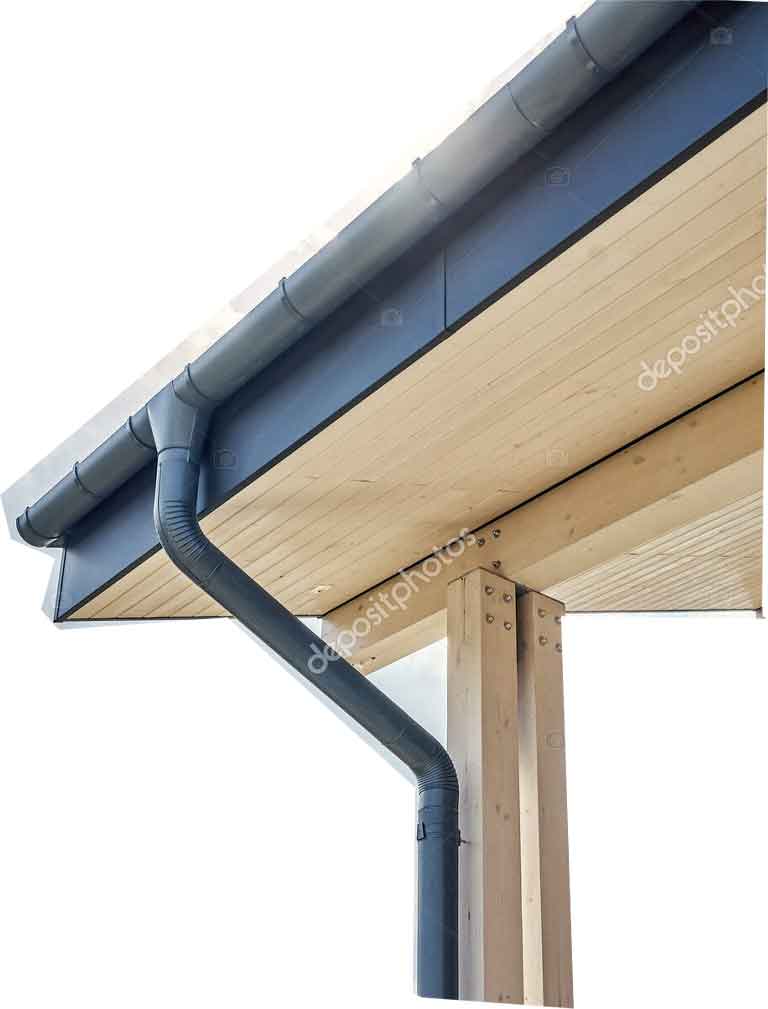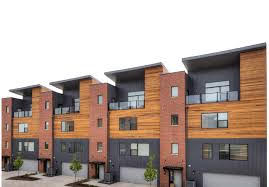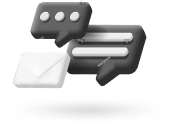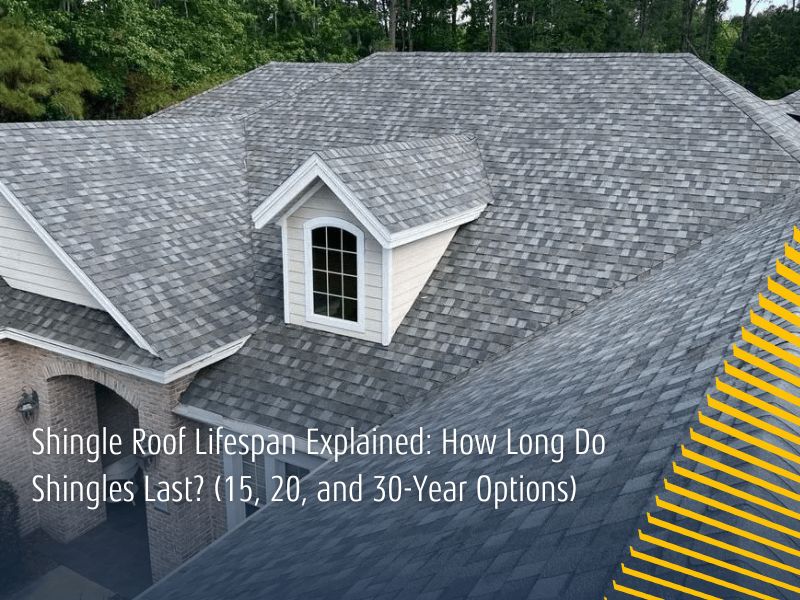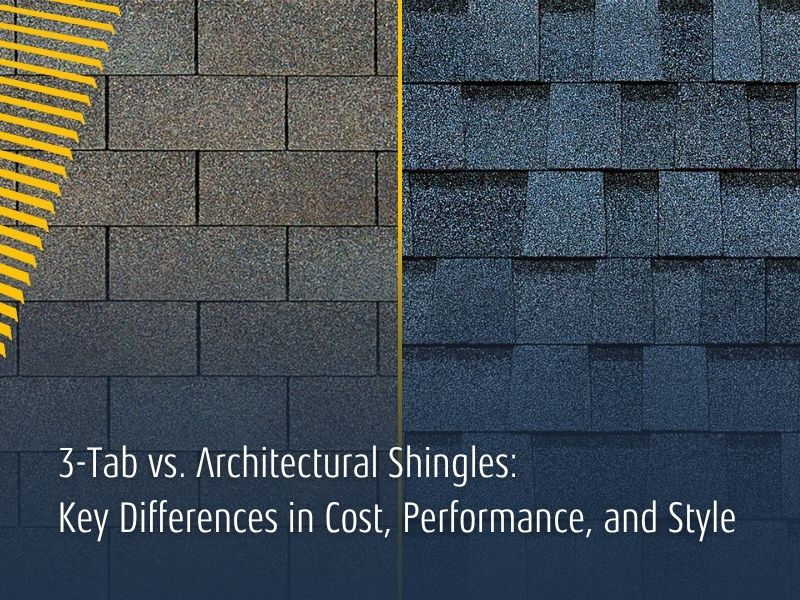The main difference between a flat roof and a pitched roof lies in slope, function, and maintenance. Flat roofs offer a sleek, modern look, usable space, and easier installation, but require vigilant drainage management. Pitched roofs provide better water runoff, higher durability, and traditional curb appeal, though they often cost more upfront. The right choice depends on your budget, climate, design preferences, and long-term maintenance expectations.
In this comprehensive guide, we’ll explore the differences between flat and pitched roofs, break down their pros and cons, discuss cost implications, and help you determine which option may be the better fit for your needs.
Flat roofs usually have a lower upfront cost, which can be appealing for budget-conscious projects. However, because they tend to require more maintenance, the savings at the start may be offset over time. Pitched roofs demand a higher initial investment but can prove more cost-effective in the long run due to their extended durability and reduced maintenance frequency.
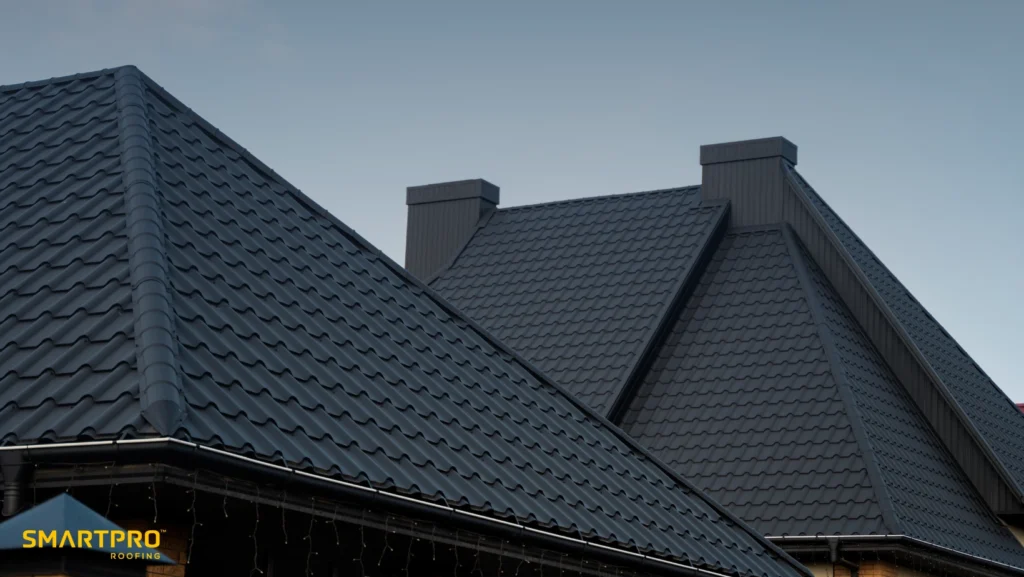 In Central Florida, roofing choices are shaped by both architectural style and the region’s unique climate, humid, rainy, and hurricane-prone. Whether you opt for a flat or pitched design, the right application can improve your property’s functionality, curb appeal, and long-term durability.
In Central Florida, roofing choices are shaped by both architectural style and the region’s unique climate, humid, rainy, and hurricane-prone. Whether you opt for a flat or pitched design, the right application can improve your property’s functionality, curb appeal, and long-term durability.
 Maintenance needs vary significantly between flat and pitched roofs. A flat roof’s minimal slope makes it easier and safer to walk on, which simplifies inspections and repairs. However, this design is also more prone to water pooling, debris accumulation, and membrane damage. Regular inspections are essential, particularly after storms, to ensure drainage systems are clear and the waterproofing is intact.
Pitched roofs, while less prone to pooling, present challenges when it comes to access. Their steep angles often require professional maintenance crews with specialized equipment for safety. The upside is that their slope helps keep the surface cleaner, as debris is more likely to slide off naturally. Depending on the materials used, such as asphalt shingles, tiles, or metal, maintenance can range from occasional cleaning to replacing damaged sections after severe weather.
Maintenance needs vary significantly between flat and pitched roofs. A flat roof’s minimal slope makes it easier and safer to walk on, which simplifies inspections and repairs. However, this design is also more prone to water pooling, debris accumulation, and membrane damage. Regular inspections are essential, particularly after storms, to ensure drainage systems are clear and the waterproofing is intact.
Pitched roofs, while less prone to pooling, present challenges when it comes to access. Their steep angles often require professional maintenance crews with specialized equipment for safety. The upside is that their slope helps keep the surface cleaner, as debris is more likely to slide off naturally. Depending on the materials used, such as asphalt shingles, tiles, or metal, maintenance can range from occasional cleaning to replacing damaged sections after severe weather.
What is Flat Roof?
A flat roof is not entirely flat, it has a very slight slope roof structure (usually between 1/4 to 1/2 inch per foot) to allow for water drainage. This type of roof is popular in modern architecture and widely used in commercial buildings. Common materials for flat roofs include:- EPDM (Ethylene Propylene Diene Monomer): A durable synthetic rubber membrane.
- TPO (Thermoplastic Olefin): Energy-efficient and UV-resistant.
- PVC (Polyvinyl Chloride): Resistant to chemicals and moisture.
What is Pitched Roof?
A pitched roof has a noticeable slope, often between 14° and 60°, depending on design and local building codes. This slope can be a simple gable or a more complex combination of hips, valleys, and dormers. Common materials for pitched roofs include:- Asphalt shingles: Affordable and widely used in residential construction.
- Clay or concrete tiles: Long-lasting and weather-resistant.
- Metal roofing: Lightweight, durable, and low-maintenance.
Flat Roof: Pros and Cons
Flat roofs are often chosen for their modern, versatile design that suits contemporary architecture and many commercial applications. Their structure allows for efficient use of space, making them ideal for installing HVAC systems, solar panels, or even creating rooftop leisure areas such as gardens or lounges. Another appealing factor is their lower initial installation cost, as they generally require fewer materials and less complex construction compared to pitched roofs. The minimal slope also makes them easier and safer to access, which can simplify roof inspections and minor repairs. However, flat roofs also come with challenges. Drainage can be a persistent concern, as even with a slight slope, water may pool and increase the risk of leaks or structural damage if not properly maintained. They also tend to have a shorter lifespan than pitched roofs, particularly in regions with harsh weather conditions. From a design perspective, they offer fewer aesthetic options, which may not blend well with more traditional neighborhoods or architectural styles. Additionally, in certain climates, flat roofs can absorb and retain more heat, potentially impacting a building’s overall energy efficiency unless proper reflective coatings or insulation are applied.Pitched Roof: Pros and Cons
Pitched roofs have long been favored for their ability to handle various weather conditions, especially in regions with heavy rainfall or snowfall. The steep slope naturally directs water away, reducing the risk of leaks and water damage. This design also allows for better ventilation and insulation, which can help maintain comfortable indoor temperatures throughout the year. However, pitched roofs are often more expensive to install compared to flat roofs. The increased cost is due to the need for more materials, more complex framing, and longer construction times. Maintenance can also be more challenging since working at a steep angle requires additional safety measures. Despite these drawbacks, the longer lifespan and classic curb appeal often make pitched roofs a worthwhile investment for many property owners.Differences between Pitched and Flat Roof
Cost of roof replacement is often a deciding factor when choosing a roofing system. While initial roofing installation costs differ, it’s important to also consider the total cost of ownership, including maintenance, roof repairs, and eventual replacement.| Feature | Flat Roof | Pitched Roof |
| Installation Cost | Generally lower due to simpler structure | Higher due to more materials and labor |
| Maintenance Cost | Moderate to high, depending on drainage upkeep | Lower over time if installed correctly |
| Lifespan | 15–30 years | 20–50+ years |
| Energy Efficiency | Good with proper insulation | Excellent in cold climates; can retain heat |
| Useable Space | Can be converted into functional outdoor space | Limited; typically attic storage |
| Best For | Modern designs, urban spaces | Traditional homes, high rainfall/snow areas |
Climate Factors to Consider When Selecting a Type of Roof
Your local climate plays a critical role in determining which roof type will serve you best. In areas with heavy rainfall, snow, or ice, pitched roofs offer a clear advantage because their slope facilitates rapid water runoff, minimizing the chances of leaks and structural damage. In contrast, flat roofs can still perform well in these conditions but require more meticulous maintenance and high-quality waterproofing to remain effective. For hot and dry climates, flat roofs can be highly practical, especially if they are coated with reflective materials to reduce heat absorption. They can also serve as platforms for solar panels or rooftop terraces, maximizing usable space. Pitched roofs can also excel in warm climates when paired with proper ventilation, but they do not provide the same potential for functional rooftop use.Understanding Roof Applications: Flat vs Pitched Designs in Central Florida
 In Central Florida, roofing choices are shaped by both architectural style and the region’s unique climate, humid, rainy, and hurricane-prone. Whether you opt for a flat or pitched design, the right application can improve your property’s functionality, curb appeal, and long-term durability.
In Central Florida, roofing choices are shaped by both architectural style and the region’s unique climate, humid, rainy, and hurricane-prone. Whether you opt for a flat or pitched design, the right application can improve your property’s functionality, curb appeal, and long-term durability.
Flat Roof Applications in Central Florida Homes
Flat roofs are becoming more common for modern and minimalist properties in urban areas such as Orlando, Tampa, and Winter Park.- Rooftop living space: Great for creating outdoor lounges, gardens, or entertainment areas.
- Solar panel installation: Provides optimal positioning and easier maintenance.
- HVAC system placement: Keeps units out of sight while allowing easy servicing.
- Energy efficiency upgrades: Reflective coatings help reduce indoor cooling costs in hot summers.
Pitched Roof Applications in Central Florida Homes
Pitched roofs remain a classic and practical choice, especially in residential neighborhoods with traditional architectural themes.- Stormwater drainage: Steep slopes allow fast water runoff during heavy rain.
- Architectural versatility: Complements Mediterranean, Craftsman, and Colonial styles popular in the area.
- Material flexibility: Supports clay tiles, metal panels, or asphalt shingles for various budgets.
- Wind resistance: Certain designs, when properly secured, can perform well during hurricane conditions.
Making the Right Roofing Decision
When choosing between flat and pitched roofs in Central Florida, evaluate:- Rainfall patterns and drainage needs
- Your home’s architectural style
- Intended rooftop functionality
- Compliance with hurricane-resistant building codes
Roof Maintenance Tips to Extend Flat and Pitched Roof Lifespan
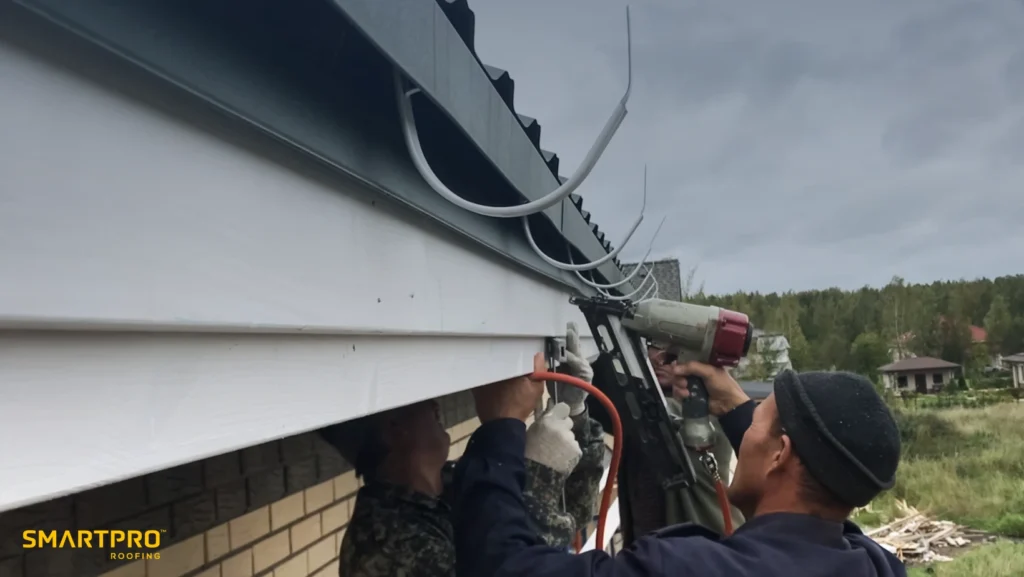 Maintenance needs vary significantly between flat and pitched roofs. A flat roof’s minimal slope makes it easier and safer to walk on, which simplifies inspections and repairs. However, this design is also more prone to water pooling, debris accumulation, and membrane damage. Regular inspections are essential, particularly after storms, to ensure drainage systems are clear and the waterproofing is intact.
Pitched roofs, while less prone to pooling, present challenges when it comes to access. Their steep angles often require professional maintenance crews with specialized equipment for safety. The upside is that their slope helps keep the surface cleaner, as debris is more likely to slide off naturally. Depending on the materials used, such as asphalt shingles, tiles, or metal, maintenance can range from occasional cleaning to replacing damaged sections after severe weather.
Maintenance needs vary significantly between flat and pitched roofs. A flat roof’s minimal slope makes it easier and safer to walk on, which simplifies inspections and repairs. However, this design is also more prone to water pooling, debris accumulation, and membrane damage. Regular inspections are essential, particularly after storms, to ensure drainage systems are clear and the waterproofing is intact.
Pitched roofs, while less prone to pooling, present challenges when it comes to access. Their steep angles often require professional maintenance crews with specialized equipment for safety. The upside is that their slope helps keep the surface cleaner, as debris is more likely to slide off naturally. Depending on the materials used, such as asphalt shingles, tiles, or metal, maintenance can range from occasional cleaning to replacing damaged sections after severe weather.
Energy Efficiency and Sustainability in Flat vs Pitched Roofs
Energy performance is another important consideration. Flat roofs can be highly energy efficient when designed with proper insulation and reflective coatings that reduce heat absorption. They also provide ideal surfaces for solar panel installations, making them attractive for eco-conscious property owners aiming to offset energy costs. Pitched roofs naturally allow for better attic ventilation, which can help regulate indoor temperatures and reduce reliance on heating and cooling systems. Certain materials, like metal roofing with reflective finishes or clay tiles with natural thermal resistance, can significantly improve energy efficiency. From a sustainability perspective, both roof types can be designed with eco-friendly materials and construction methods, but the best for your home will depend on the building’s orientation, location, and intended use.How to Choose the Right Roof for Your Home or Business
Selecting between a flat or pitched roof should begin with an assessment of your property’s needs, budget, and environmental conditions. Consider how you plan to use the roof space, whether for purely functional purposes or for added features like a rooftop garden. Climate factors will heavily influence your decision, as will the architectural style you wish to maintain or achieve. Cost is another significant driver. While flat roofs may be more affordable to install, their shorter lifespan and potentially higher maintenance requirements can offset those savings. Pitched roofs require more investment upfront but can offer decades of reliable performance with fewer repairs. The right decision often comes from balancing aesthetics, functionality, long-term costs, and local weather patterns. Consulting with a roofing specialist who understands the demands of your area can help ensure that you make an informed choice that will protect your property for years to come.Frequently Asked Questions (FAQ)
1. Is a flat roof more likely to leak than a pitched roof?
Flat roofs are not inherently prone to leaks if they are properly installed and maintained. However, their minimal slope means water does not drain as quickly as on a pitched roof, so regular inspections and drainage upkeep are critical.2. Which roof type lasts longer?
Pitched roofs generally have a longer lifespan, pitched roof can last often 25 to 50 years depending on materials, while flat roofs typically last 15 to 25 years. Advances in flat roofing materials, such as high-quality membranes, can extend their durability.3. Can I install solar panels on either roof type?
Yes. Both flat and pitched roofs can support solar panels, although flat roofs may offer more flexibility in panel orientation for optimal sunlight exposure.4. Which roof type is better for energy efficiency?
Both can be energy efficient when designed correctly. Flat roofs can be coated with reflective materials and paired with high-quality insulation, while pitched roofs often allow for better attic ventilation and the use of thermally efficient materials like clay tiles or metal.5. Is one type cheaper to insure?
Insurance costs vary by provider and location. In some areas, pitched roofs may be cheaper to insure because of their better performance in shedding water and snow, while in other regions, the difference is minimal.Get Expert Help Choosing the Right Roof for Your Property
Both flat and pitched roofs have clear advantages depending on your climate, design vision, and long-term goals.- Flat roofs are excellent for modern aesthetics, usable outdoor space, and lower upfront costs, especially in urban or dry climates.
- Pitched roofs excel in drainage, durability, and traditional styling, making them a go-to choice in wet or snowy regions.



